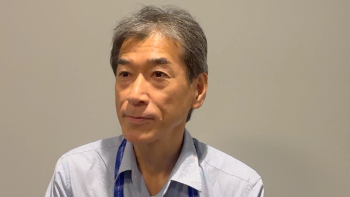
- Oncology Vol 28 No 1S
- Volume 28
- Issue 1S
(P128) Bi-Institutional Cosmetic Outcome of Radiotherapy for Benign Lymphoepithelial Cysts of Parotid Glands in HIV Patients
The long-term outcomes of radiation therapy (RT) in patients infected with human immunodeficiency virus (HIV) who have benign lymphoepithelial cysts (BLECs) of the parotid glands are reported.
Waleed F. Mourad, MD, MSc, PhD, Chengtao Wang, MD, PhD, John J. Lukens, MD, Shyamal Patel, MD, Rafi Kabarriti, MD, Rebekah Young, MD, Catherine Concert, DNP, Magdalena Ryniak, MA, RN, Rania A. Shourbaji, MPH, Daniel Shasha, MD, Madhur K. Garg, MD, Kenneth S. Hu, MD, Shalom Kalnicki, MD, Louis B. Harrison, MD; Beth Israel and Montefiore Medical Centers; Albert Einstein College of Medicine
Aim: To report the long-term outcomes of radiation therapy (RT) in patients infected with human immunodeficiency virus (HIV) who have benign lymphoepithelial cysts (BLECs) of the parotid glands.
Methods: This is a bi-institutional retrospective study of HIV-associated BLECs of the parotids. The medical records of 67 HIV-positive patients treated with RT between 1987 and 2012 were reviewed. Patients were stratified into two groups: Group A consisted of 15 patients (22%) who received a total dose of ≤ 18 Gy with a median dose 10 Gy (range: 8–18 Gy), and Group B consisted of 52 patients (78%) who received a total dose of 24 Gy. Bilateral parotids were treated with RT. The median age at RT, HIV diagnosis, and duration of HIV seropositivity was 42 years (range: 7–70 yr), 38 years (range: 23–53 yr), and 11 years (range: 6–35 yr), respectively.
Results: After a median follow-up of 38 months (range: 12–141 mo) for the entire cohort, the overall response (OvR) was 66%. Specifically, complete response (CR) and partial response (PR) were 55% and 11%, respectively. Fourteen of 15 patients (93%) in Group A (≤ 18 Gy) eventually experienced local failure (LF) with the re-emergence of parotid hypertrophy. Among the patients in Group B (24 Gy), 69%, 14%, and 17% experienced CR, PR, and LF, respectively. Median times to failure in Groups A and B were 7 and 20 months, respectively (P < .0001). Similarly, logistic regression analysis revealed the higher dose to be associated with better response rate (ie, CR or PR) (P < .0001), which was also statistically significant (P = .03) after adjusting for confounding variables (age, race, gender, highly active antiretroviral therapy [HAART] use, and fractionation). No patients in either group experienced Radiation Therapy Oncology Group (RTOG) toxicities ≥ grade 2. Specifically, patients experienced mucositis (48%), xerostomia (45%), skin erythema (41%), and altered taste (14%).
Conclusion: Our data show that 24 Gy is a well-tolerated radiation dose for sustainable cosmetic control of BLECs of the parotid glands in HIV patients.
Articles in this issue
Newsletter
Stay up to date on recent advances in the multidisciplinary approach to cancer.




















































































